Table of Contents
Directions (1–5): Study the table & answer the questions that follow:

Net Profit = OPBDIT – Depreciation – Interest – Tax
OPBDIT: Operating profit before depreciation, interest & tax
Q1. For which year is the operating profit after interest and tax but before depreciation the highest?
(a) 2002
(b) 2003
(c) 2001
(d) 2000
(e) None of these
Q2. What is the approximate difference between the percentage increase in net profit for the period 1999-2000 and the OPBDIT for the period 1999-2000?
(a) 30%
(b) 39%
(c) 23%
(d) 27%
(e) 49%
Q3. Which of the following has witnessed a growth across all the years?
(a) Depreciation & OPBDIT
(b) Depreciation & net profit
(c) Tax and Depreciation
(d) Net profit & other income
(e) Tax and net-profit
Q4. Assuming that the amount depreciated in any year is a percentage of the OPBDIT acquired by the company in the previous year, in which year did the company see the maximum percentage of depreciation?
(a) 2003
(b) 2001
(c) 2002
(d) 2000
(e) Can’t determine
Q5. The average net profit for the period 1999-2003 is what % of the average interest for the same period? (Calculate up to two decimal points)
(a) 147.28%
(b) 140.35%
(c) 126.46%
(d) 157.30%
(e) None of these
Q6. PBA and PDC are two secants. AD is the diameter of the circle with centre at O. ∠A= 40°, ∠P = 20°
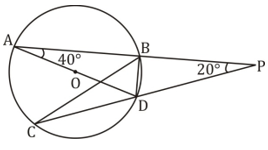
Quantity 1: ∠DBC
Quantity 2: ∠ADB
(a) Quantity I > Quantity II
(b) Quantity I < Quantity II
(c) Quantity I ≥ Quantity II
(d) Quantity I ≤ Quantity II
(e) Quantity I = Quantity II or No relation
Q7. Quantity 1: Height of the tank if the volume of cylindrical tank is 12320 cubic cm. Its radius and height are in the ratio of 7 : 10 respectively.
Quantity 2: Level kerosene in the jar. A conical vessel of base radius 2 cm and height 3 cm is filled with kerosene. This liquid leaks through a hole in the bottom and collects in a cylindrical jar of radius 2 cm.
(a) Quantity I > Quantity II
(b) Quantity I < Quantity II
(c) Quantity I ≥ Quantity II
(d) Quantity I ≤ Quantity II
(e) Quantity I = Quantity II or No relation
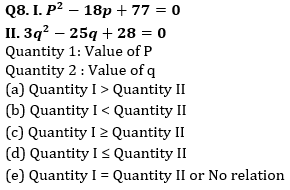
Q9. A man who swim 48m/minute in still water, swims 200m against the current and 200m with the current. The difference between the time taken by him against the stream and with the stream is 10 minutes.
Quantity 1: speed of current.
Quantity 2: Speed of a man who completes 3 rounds of a circular path of radius 49 m in 14 minutes.
(a) Quantity I > Quantity II
(b) Quantity I < Quantity II
(c) Quantity I ≥ Quantity II
(d) Quantity I ≤ Quantity II
(e) Quantity I = Quantity II or No relation
Directions (10): A shopkeeper defrauds both the dealer and the customer by measuring weights incorrectly. When he is purchasing items from the dealer, he takes 20% more then the indicated weight and when he is selling them to the customer, he gives 20% less than the indicated weight.
Q10. If the price that the shopkeeper charges his customer is the same as what the dealer charges the shopkeeper, then what profit percentage does the shopkeeper make ?
(a) 50%
(b) 30%
(c) 40%
(d) 60%
(e) None of these
Q11. A garment company declared 17% discount for wholesale buyers. Mr Sameer bought garments from the company for Rs. 1660 after getting discount. He fixed up the selling price of garments in such a way that he earned a profit of 7% on original company price. What is the selling price ?
(a) Rs. 2130
(b) Rs. 2140
(c) Rs. 2410
(d) Rs. 2310
(e) None of these
Directions (12-13): Two trains start together from a Station A in the same direction. The second train can cover 1.25 times the distance of first train in the same time. Half an hour later, a third train starts from same station and in the same direction. It overtakes the second train exactly 90 minutes after it overtakes the first train.
Q12. What is the speed of third train, if the speed of the first train is 40 Km/hr?
(a) 20 Km/hr
(b) 50 Km/hr
(c) 60 Km/hr
(d) 80 Km/hr
(e) none of these
Q13. What is the distance covered by third train till the time it overtakes the second train?
(a) 160 kms.
(b) 150 kms.
(c) 140 kms.
(d) 130 kms.
(e) None of these
Directions (14-15): There are 500 rooms in a multi-floored hotel. However, due to a change in rule, the hotel has to decrease the number of floors by 5. However, the management is able to put 5 more rooms in each floor. Over all, the number of rooms in the hotel decreases by 10%.
Q14. What is the number of floors and the number of rooms/floor the hotel originally had?
(a) 10 floors 50 rooms
(b) 20 floors 20 rooms
(c) 20 floors 25 rooms
(d) 50 floors 10 rooms
(e) none of these
Q15. If the hotel has to increase the total no. of rooms to 600, then what is the additional number of rooms the hotel must put in each floor?
(a) 20
(b) 15
(c) 10
(d) 25
(e) None of these
Practice More Questions of Quantitative Aptitude for Competitive Exams:
Solutions
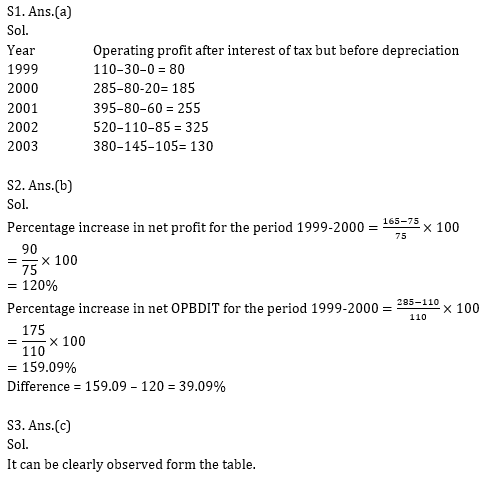
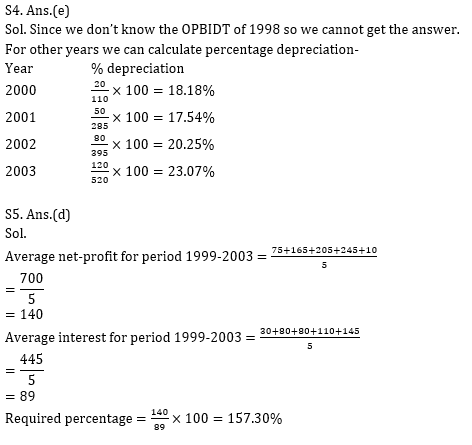
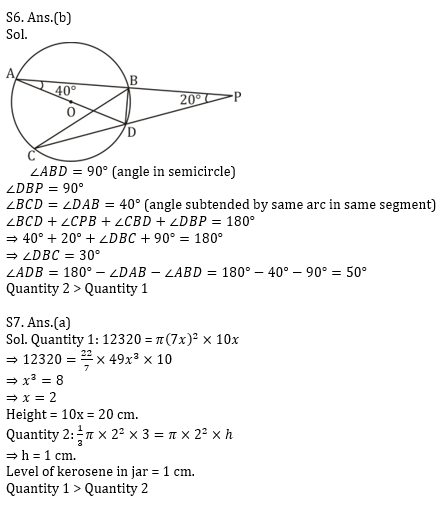
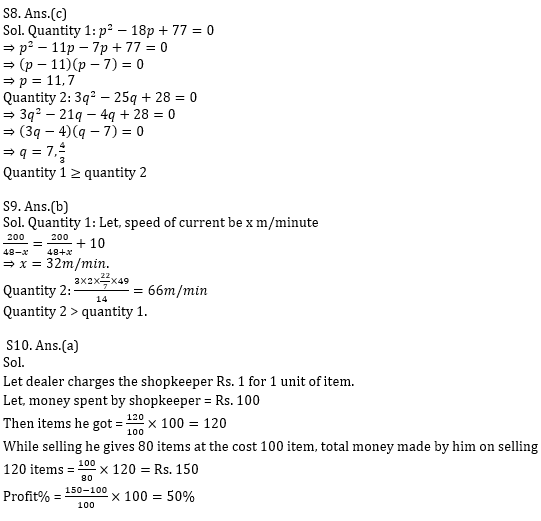
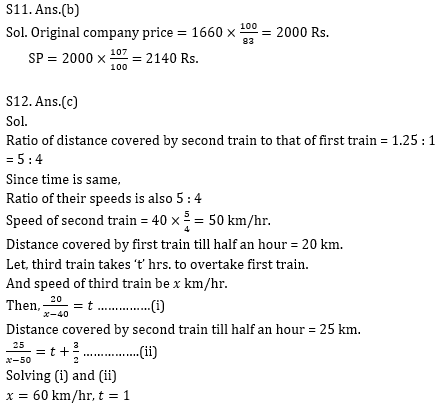
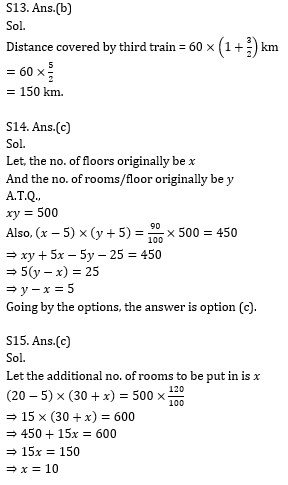
Practice with Crash Course and Online Test Series for IBPS Clerk Prelims:
- Bank Test Pack Online Test Series (12 Months)
- IBPS PO and Clerk Prime 2020-21 Online Test Series
- SBI PO Prime 2020-21 Online Test Series
Click Here to Register for Bank Exams 2020 Preparation Material

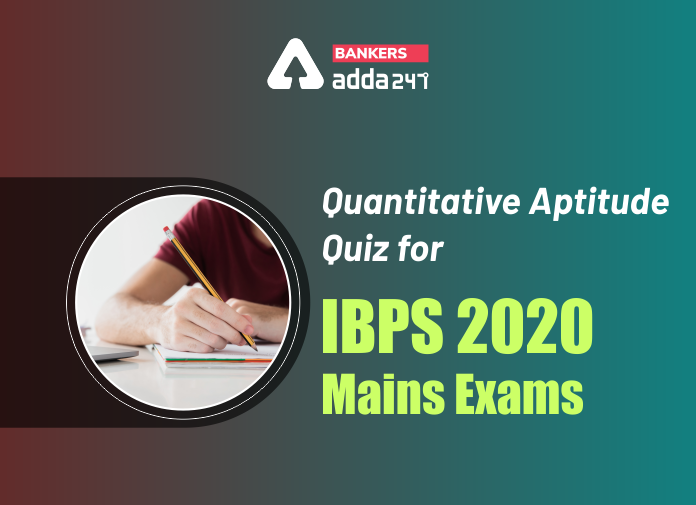


 GA Capsule for SBI Clerk Mains 2025, Dow...
GA Capsule for SBI Clerk Mains 2025, Dow...
 The Hindu Review October 2022: Download ...
The Hindu Review October 2022: Download ...
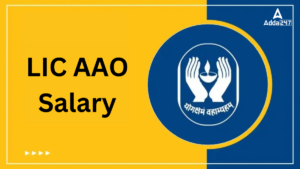 LIC AAO Salary 2025, Revised Structure, ...
LIC AAO Salary 2025, Revised Structure, ...





